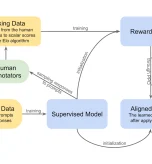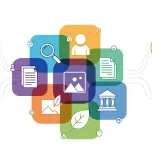For centuries, farming has been an art of intuition. Today, it’s becoming a science of precision. The modern farmer is facing unprecedented challenges-from volatile weather patterns and rising input costs to a growing global demand for food. The solution to navigating this complex landscape is not just about working harder; it’s about working smarter.
This is where AI-powered Precision Agriculture comes in. It’s a technological revolution that transforms farm management from a game of averages to a strategy of specifics. By leveraging data from drones, satellites, and on-ground sensors, AI allows farmers to make hyper-informed decisions that directly enhance revenue, slash operational costs, and build a more resilient and profitable farm.
This guide will break down the specific, practical ways AI is moving from a futuristic concept to a crucial driver of farm profitability today.
The Core Principle: From Farm-Level to Plant-Level Management
Traditional farming treats an entire field as a single unit. The same amount of water, fertilizer, and pesticide is applied everywhere, regardless of variations in soil health or crop stress.
Precision agriculture shatters this model. It uses AI to understand and manage the farm on a meter-by-meter, or even plant-by-plant, basis. This granular control is the key to unlocking substantial gains in both efficiency and revenue.
Ways AI Directly Increases Farm Revenue and Profit
1. Maximising Yields with Predictive Analytics
The Challenge: Yields are often a mystery until harvest time, making financial planning difficult and leaving potential revenue on the table.
The AI Solution: AI models like AyaGrow analyse a vast array of data-including historical yield data, soil nutrient levels from sensors, and high-resolution satellite imagery—to create highly accurate yield prediction maps.
- How it Boosts Revenue: These maps allow farmers to identify high-potential and underperforming zones within a single field. They can then reallocate resources (like extra fertilizer) to the areas that will produce the highest return, optimising the entire field’s output and maximising the final harvest.
2. Slashing Input Costs with Variable Rate Application (VRA)
The Challenge: The cost of fertilizers, pesticides, and herbicides is a major drain on profits. Applying them uniformly across a field leads to significant waste.
The AI Solution: AI-powered drones and sensors scan the fields to identify the precise location of weeds, pests, or nutrient deficiencies. This data is fed into smart tractors and sprayers that perform Variable Rate Application.
- How it Boosts Revenue: Instead of blanket spraying, the equipment applies the exact amount of product needed, only where it is needed. This can reduce fertilizer and herbicide costs by up to 40-60%, directly increasing the farm’s profit margin. For example, a system might direct sprayers to target a specific patch of weeds, leaving the rest of the crop untouched.
3. Early Disease and Pest Detection
The Challenge: Crop diseases and pest infestations can wipe out a significant portion of a harvest if not caught in the earliest stages.
The AI Solution: Computer vision models are trained to analyse multispectral imagery from drones. These models can detect subtle changes in a plant’s light reflection—invisible to the human eye—that are tell-tale signs of stress or disease.
- How it Boosts Revenue: By identifying a problem weeks before it becomes a full-blown outbreak, AI enables early, targeted intervention. This saves the crop from widespread damage, securing the potential revenue from the harvest. As seen in our work in Ghana with maize farmers, this early detection can increase yields by up to 30%.
4. Optimising Water Usage for Higher Quality Crops
The Challenge: Inefficient irrigation not only wastes a precious resource but can also lead to waterlogged soil and lower-quality crops.
The AI Solution: AI systems synthesise data from soil moisture sensors, weather forecasts, and satellite imagery showing plant health (evapotranspiration). The system then calculates the precise amount of water each section of the field needs and controls the irrigation system automatically.
- How it Boosts Revenue: This eliminates water waste, significantly cutting water and energy costs. More importantly, optimal hydration leads to healthier plants and a higher-quality, more valuable final product, which often commands a premium price at market.
5. Creating New Revenue Streams with Carbon Credits
The Challenge: Farmers are increasingly looking for diversified income streams.
The AI Solution (2025-2027 and beyond): Sustainable farming practices enabled by AI, such as reduced fertilizer use and cover cropping, help sequester more carbon in the soil. AI-powered monitoring, using satellite data, provides the Measurement, Reporting, and Verification (MRV) needed to accurately quantify this sequestered carbon.
- How it Boosts Revenue: This trusted, transparent data allows farmers to sell verified carbon credits on the open market, creating a brand new, reliable revenue stream directly tied to their sustainable practices.
The Aya Data Advantage
The success of any precision agriculture system depends on one thing: the quality of its data. The AI model is only as smart as the information it learns from.
At Aya Data, we specialise in providing the high-quality, meticulously annotated data from drone, satellite, and sensor sources that powers these revolutionary systems. We build the “brains” such as AyaGrow behind the technologies that help farmers work smarter, become more profitable, and sustainably feed the future.
Ready to unlock the full profit potential of your farm? Contact our experts to learn how AI and high-quality data can revolutionise your crop farming operations.
Frequently Asked Questions (FAQ)
Is AI precision agriculture only for large, industrial farms?
No. While large farms were the first adopters, the falling cost of drone and sensor technology is making these tools increasingly accessible to small and medium-sized farms, delivering significant ROI even at a smaller scale.
How much of a return on investment (ROI) can I expect?
The ROI varies by crop, farm size, and the specific technologies adopted. However, due to significant cost savings on inputs and measurable increases in yield, many farms report seeing a positive return within the first 1-3 growing seasons.
Is this technology difficult to implement?
Modern precision agriculture platforms like AyaGrow are designed to be user-friendly. It delivers insights via simple dashboards and can often integrate directly with existing farm machinery, lowering the barrier to entry.






